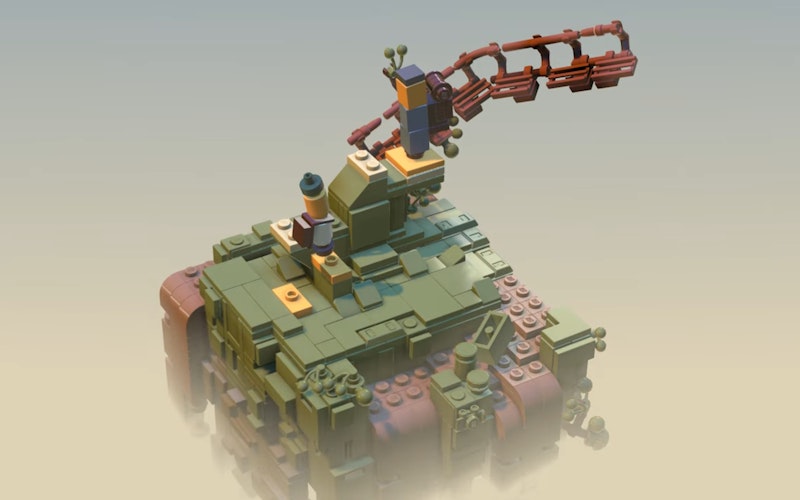
Games
Lego Builder’s Journey and God as Engineer
Any parent who has stepped on a stray Lego piece knows there is a downside to every blessing. But that’s a small price to pay for remarkable toys that let us experiment with structure, construction, and recombination. Even non-physical Lego video games, such as the short and poignant Builder’s Journey, can help us explore our God-given desire to play with problems.
Builder’s Journey is the product of Lego’s new game development studio Light Brick. In contrast to the big-budget Lego games that rely on elaborate stories, movies, or comic books—such as Lego Batman or Lego Star Wars—this new title is simple, abstract, and not an action game. Just about everything in Builder’s Journey is built with classic bricks, while the story is a very simple nonverbal tale of a child and caregiver on a journey.
Rather than engage in combat or jump and climb, each level is a puzzle the player solves by selecting blocks and using them to build structures that address a problem or objective. Early on, you simply pick up bricks to build a sandcastle on the beach. As the game proceeds, most of the levels involve building a path for the child to follow. For example, it might be necessary to get a factory machine to print bricks that can then form a bridge to the level’s exit.
There is much to like about this game. Just like many smaller titles, Builder’s Journey employs a kind of storytelling that video games do particularly well, which is to say that it is all about atmosphere and interaction. The music is peaceful, the color palette attractive, and the exploration fleshes out an interesting little world. Just as importantly, the understated character animation is masterful, communicating character with an efficient gracefulness.
But what really struck me about Builder’s Journey is the way it connects with our desire to do puzzles. I don’t mean to say that everyone loves assembling jigsaw pieces into a photo of a pretty castle or enjoys the Word Jumble that my grandparents used to play or loves head-butting with the brain-bending challenges of Jonathan Blow’s The Witness. But the fact that there are so many forms of puzzles should give us a clue that there’s something in the way humans are designed that frequently draws us to them.
What really struck me about Builder’s Journey is the way it connects with our desire to do puzzles.
Puzzles essentially solve problems. The word “problem” typically has a negative weight; I suspect most of us would normally describe problems as painful, difficult, uncomfortable things to avoid. And certainly, there’s something to this. The Bible tells the story of a perfect world corrupted by sin. Part of the curse of leaving the Garden of Eden is that all necessary aspects of life will be filled with struggle and suffering, from childbirth to agriculture. A great deal of God’s instructions to us in the Bible are focused on healing the broken problems of this world.
With the right perspective, however, we can see problems as positives. They are challenges we can solve. And the solving is downright enjoyable. It exercises the gifts that God gave us: meaning-making and interpretation, reasoning, and the capacity to experiment. These talents are not just essential to our survival; they make life interesting and often fun. Problem-solving is part of what it means to be made in God’s image.
In Culture Making, Andy Crouch presents God as the ultimate creative engineer. God makes new things and provides the order necessary for their existence. Crouch writes, “(I)n a way the Creator’s greatest gift to his creation is the gift of structure—not a structure which locks the world, let alone the Creator himself, into eternal mechanical repetition, but a structure which provides freedom.” This sounds exactly like puzzles: highly structured, bounded areas of play. It’s part of who God is and what God does. Puzzling, then, is built right into our character as created beings.
Video games are particularly good at satisfying our desire to engineer solutions. In Builder’s Journey, the player learns how to do one basic puzzle-solving action, then proceeds to a subsequent puzzle that builds off of the skills from the last one. Every challenge made me think, strategize, experiment, and generally exercise the brain that God gave me. The joy of problem solving is distilled and focused in these sorts of video games. Just as stories engage our imagination, so puzzles engage the inner engineer that God placed within us.
Topics: Games